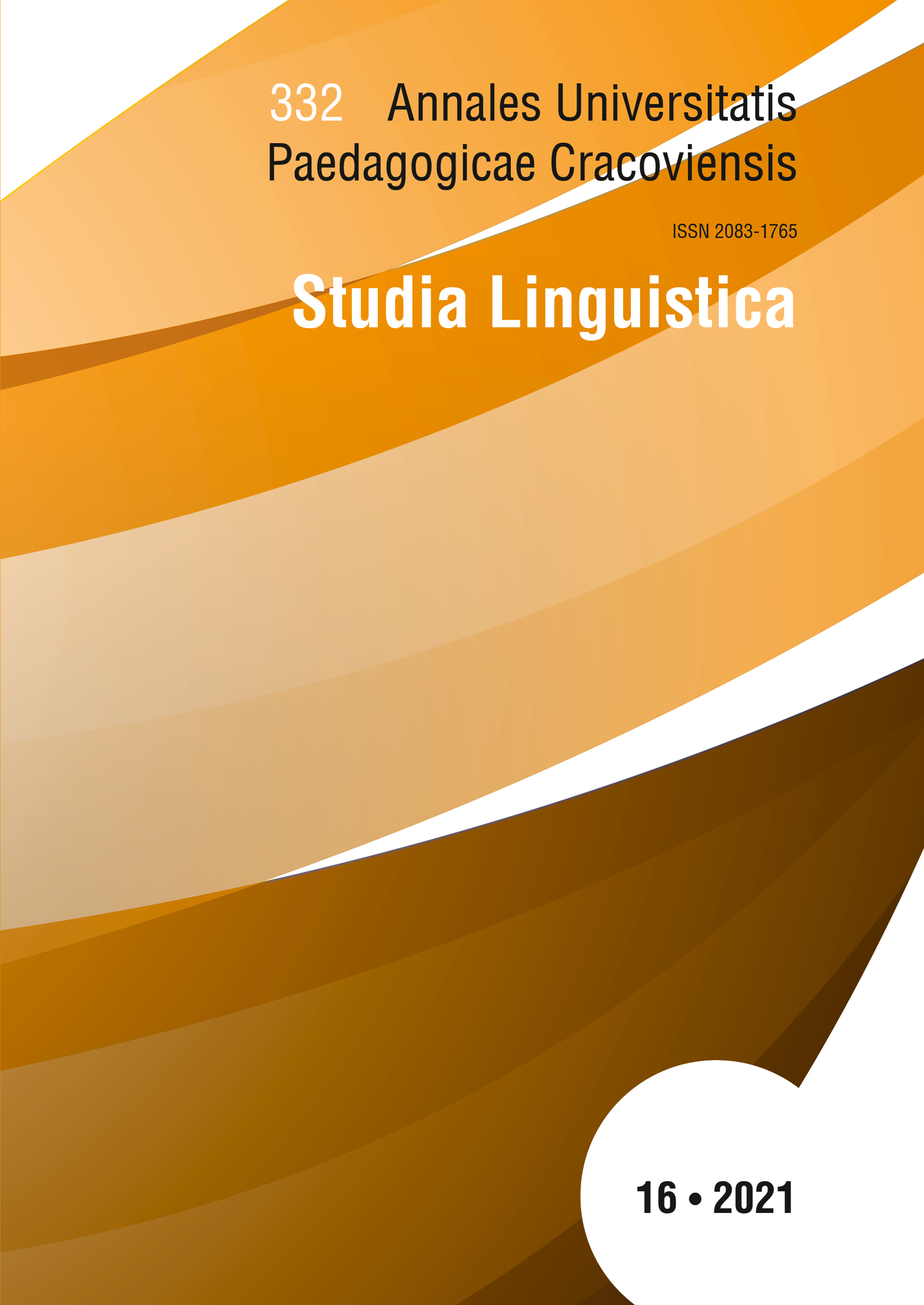Polish equivalents for the Greek lexeme γάμος in the New Testament of the Leopolita’s Bible (1561) – swadziebny, gody, wesele – and the problem of its lexis chronological stratification
Main Article Content
Abstract
There are same chronological diversified lexis layers In the Bible edited by Jan Leopolita and published in Cracow in 1561. The analysis of Polish equivalents for the Greek lexeme γάμος (or its Latin equivalents in the Vulgate - nuptiae, nuptialis) ‘a marriage, wedding, weddingceremony; plur: a wedding-feast’, i. e. swadziebny, gody, wesele, referring to empirical system and text data, acquired from lexica of the historic Polish and from texts of other Renaissance Polish renderings of the New Testament, proved chronological diversity of the equivalents. The lexeme swadziebny belongs to an older lexis layer, probably representing the lexicon of the former translation, perhaps medieval. The lexeme wesele represents a new lexis layer which may have been introduced into the text by Jan Leopolita, as the effect of his editorial efforts. Chronological status of the lexeme wesele in the analyzed Biblical rendering lexicon is ambiguous. It should be considered as an evidence of an traditional lexis layer. It may have been introduced into the text as a substitute of the lexeme swadziebny.
Downloads
Article Details

This work is licensed under a Creative Commons Attribution-NonCommercial-NoDerivatives 4.0 International License.
Author, submitting a text to the editorial board of the journal “Annales Universitatis Paedagogicae Cracoviensis. Studia Linguistica", certifies that the content of the article has not been published so far and that the work does not violate in any way the copyright or related rights of other person, as well as other rights of third parties, and that no one's rights to the work (or any part thereof) have been missed. After signing the contract, the property rights to the published materials are transferred to the Scientific Publisher of the University of the National Education Commission, Krakow.
“Annales Universitatis Paedagogicae Cracoviensis. Studia Linguistica” is an open access journal, and all its content is made available free of charge to users and institutions under the Creative Commons CC-BY-NC-ND 4.0 license (attribution, non-commercial use, no derivative works). Under this license, the authors agree that their work may be lawfully reused for any purpose, except for commercial purposes, without the prior consent of the author or publisher. Everyone can read, download, copy, print, distribute and process these works, provided that the author's marking and the original publication place are correct. Published texts may not be used to create derivative works (e.g. to translate and publish in another language without the consent of the publisher). This is in line with the BOAI (Budapest Open Access Initiative) definition. "Studia Linguistica" does not charge for submitting or processing articles.
References
Belcarzowa E., 1988, Charakteristik des Wortschatzes der Leopolita, [w:] Leopolita. Faksimile der Ausgabe Krakau 1561, oprac. R. Olesch, H. Rothe, t. 2: Kommentar, Padeborn–München–Wien–Zürich, s. 25–73.
Google Scholar
Belcarzowa E., 1989, Niektóre osobliwości leksykalne Biblii tzw. Leopolity, Wrocław.
Google Scholar
Belcarzowa E., 2006, Polskie i czeskie źródła przekładu Biblii Leopolity, Kraków.
Google Scholar
Brückner A., 1903, Literatura religijna w Polsce średniowiecznej, Warszawa.
Google Scholar
Florczak Z., 1966, Biografie pisarzy, drukarzy i korektorów, [w:] Słownik polszczyzny XVI wieku, t. 1: A – bany, red. S. Bąk, S. Hrabec, W. Kuraszkiewicz, M.R. Mayenowa, S. Rospond, S. Saski, W. Taszycki, J. Woronczak, F. Pepłowski, Wrocław–Warszawa–Kraków, s. CXV–CXXXIV.
Google Scholar
Frick D. A., 2018, Polska philologia sacra w czasach reformacji i kontrreformacji. Kilka kart z historii sporów wyznaniowych (1551–1632), tłum. K. Szymańska, Warszawa.
Google Scholar
Kossowska M., 1968, Biblia w języku polskim, t. 1, Poznań.
Google Scholar
Kwilecka I., 2003, Studia nad staropolskimi przekładami Biblii, Poznań.
Google Scholar
Lisowski T., 2010, Sola Scriptura. Leksyka Nowego Testamentu Biblii gdańskiej (1632) na tle porównawczym. Ujęcie kwantytatywno-dystrybucyjne, Poznań.
Google Scholar
